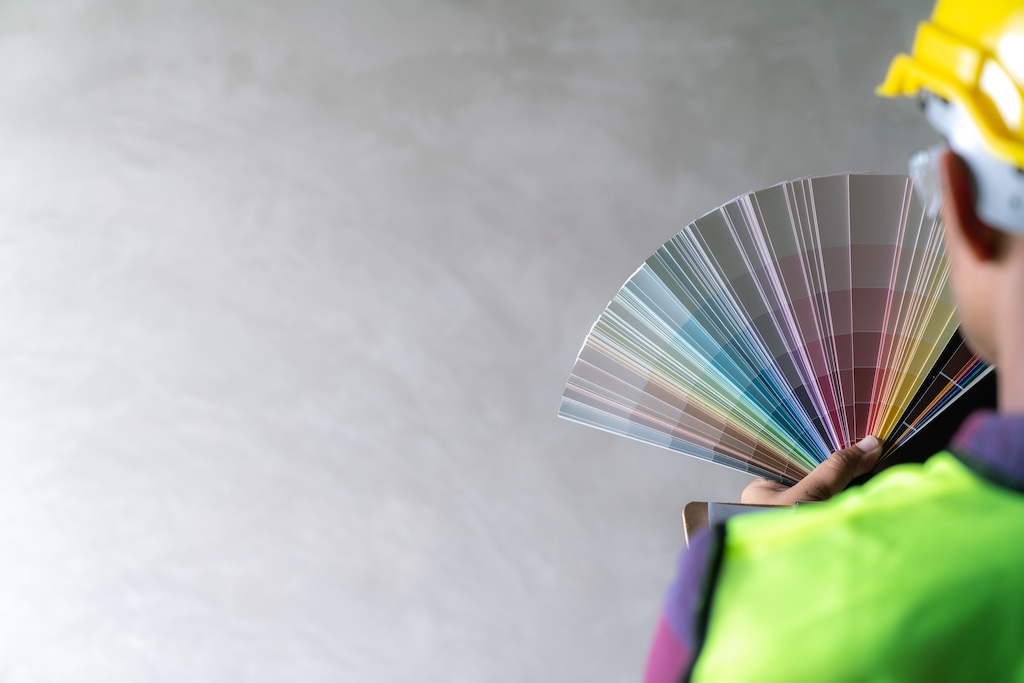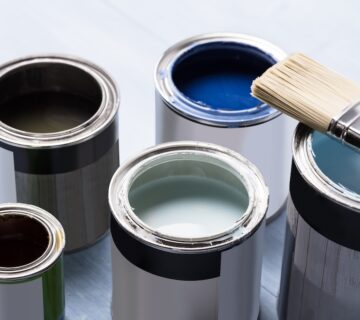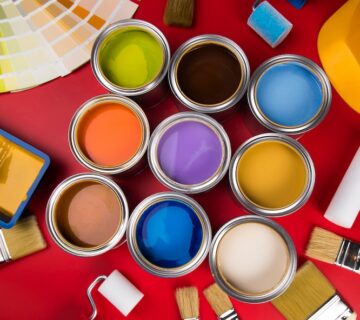Achieving a cohesive home design is akin to mastering an intricate dance between artistry and science, with color matching serving as a pivotal choreographer. The right color scheme possesses the transformative power to harmonize your living space, fostering an atmosphere that’s both visually captivating and emotionally gratifying. However, without deliberate consideration, colors can clash, disrupting the balance and flow of your home environment. In this blog, we illuminate the path to effective color matching, equipping you with the insights needed to orchestrate a symphony of hues that resonates with your personal style and enhances your living space.
Understanding Color Theory
At the heart of proficient color matching lies a firm grasp of color theory, a discipline that delves into the intricacies of hues and their relationships. The venerable color wheel stands as an indispensable guide in this endeavor, elucidating the intricate relationships between various hues and their placement. By discerning complementary colors (those positioned directly opposite each other on the wheel) and analogous colors (those adjacent to each other), you gain the foundation for crafting harmonious color palettes that resonate with visual balance. Complementary colors inject vitality through vibrant contrasts, while analogous colors weave a tapestry of subtle harmony, imbuing spaces with a sense of unity and coherence.
Start with a Base Color
Embark on your color journey by selecting a base color, a foundational hue that will exert the most profound influence on your space. This could manifest as a soothing neutral like beige, gray, or white, or as a bold and expressive shade that sets the tone for the entire design scheme. Your base color serves as a guiding beacon, anchoring the aesthetic vision and dictating the ambiance of the space, ensuring cohesion and unity amidst diverse design elements.
Use the 60-30-10 Rule
Adhere to the time-honored principles of the 60-30-10 rule, a guiding precept in interior design that ensures equilibrium and visual interest. According to this rule, allocate 60% of the room’s color palette to the dominant hue, 30% to a complementary secondary color, and 10% to an accent color that punctuates the scheme with flair. This balanced distribution confers depth and dynamism to the space, preventing any single color from overpowering the visual narrative, thereby fostering a sense of harmony and sophistication.
Consider the Mood You Want to Create
Deliberate on the emotional tenor you wish to imbue into each room, as colors wield a profound influence on mood and ambiance. Warm hues like reds, oranges, and yellows infuse spaces with energy and conviviality, while cool tones like blues, greens, and purples imbue tranquility and serenity. Tailor your color selections to evoke the desired emotional response, curating a holistic sensory experience for occupants that fosters comfort, well-being, and aesthetic delight.
Incorporate Neutrals
Harness the understated elegance of neutrals to temper the vibrancy of bolder hues and instill a sense of cohesion into your color scheme. Neutrals, ranging from timeless whites and beiges to muted tones echoing your primary colors, serve as versatile allies in striking the delicate balance between dynamism and serenity. Integrate these subdued tones strategically to foster visual equilibrium and refinement within your living spaces, thereby lending an air of sophistication and understated luxury to the overall design aesthetic.
Utilize Textures and Patterns
Elevate your color scheme to new heights of sophistication by interweaving textures and patterns into the visual tapestry of your home. Textures and patterns lend depth and tactile allure to surfaces, while also facilitating the seamless integration of disparate hues within a room. Whether through intricately woven textiles or boldly patterned accents, embrace these design elements as potent instruments for imbuing your space with character and visual intrigue, thereby adding layers of complexity and visual interest that captivate the eye and engage the senses.
Flow Between Rooms
Harmonize the color palette across contiguous spaces, ensuring a seamless transition that fosters continuity and coherence throughout your home. Particularly vital in open-plan layouts or interconnected living areas, this principle of color flow mandates a thoughtful juxtaposition of hues that complement each other without sacrificing individuality. Opt for varying shades within the same color family or hues with congruent undertones to forge a cohesive visual narrative that unfolds effortlessly from room to room, creating a sense of spatial unity and aesthetic continuity that enhances the overall design scheme.
Test Before Committing
Exercise prudence and foresight by subjecting your color selections to real-world scrutiny before finalizing your choices. Apply paint swatches directly onto the walls and observe them under different lighting conditions to discern how natural and artificial illumination interacts with the colors. This empirical approach empowers you to make informed decisions and averts potential missteps, ensuring that your chosen hues harmonize harmoniously with the spatial context, thereby culminating in a design scheme that delights the senses and evokes a profound sense of comfort and aesthetic satisfaction.
Final Thoughts
Color matching transcends mere aesthetic concerns, emerging as a potent instrument for orchestrating a holistic and inviting home environment. By embracing the principles of color theory, anchoring your design around a base color, adhering to the 60-30-10 rule, tailoring hues to evoke desired moods, integrating neutrals strategically, incorporating textures and patterns thoughtfully, fostering color flow between rooms, and conducting meticulous testing, you unlock the transformative potential of color in shaping your living space. With each stroke of the brush and every thoughtful hue selection, you embark on a journey toward crafting a home that resonates with warmth, harmony, and enduring beauty. For more design tips and ideas, visit our website at sisupainting.com and explore our blog at sisupainting.com/blog.





No comment